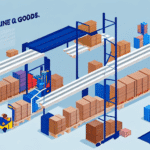Streamline Your Business Operations with Commerce Hub and UPS Worldship Integration
In today's competitive marketplace, efficient order fulfillment and shipping are critical to business success. Integrating Commerce Hub orders with UPS Worldship offers a robust solution for businesses aiming to enhance their shipping processes, improve accuracy, and deliver exceptional customer experiences. This article delves into the benefits of this integration, provides a comprehensive setup guide, and highlights key considerations for optimizing your shipping workflow.
Key Benefits of Integrating Commerce Hub with UPS Worldship
Integrating Commerce Hub with UPS Worldship offers numerous advantages that can propel your business forward:
- Enhanced Efficiency: Automation eliminates manual data entry, reducing processing time and minimizing errors.
- Cost Savings: Streamlined shipping processes can lower operational costs and optimize resource allocation.
- Improved Customer Satisfaction: Faster and more accurate order fulfillment leads to timely deliveries and happier customers.
- Real-Time Visibility: Gain comprehensive insights into shipping statuses, enabling proactive issue resolution.
- Inventory Management: Automated shipping processes help maintain optimal inventory levels, preventing overselling or stockouts.
According to a Statista report, global e-commerce sales are projected to reach $6.54 trillion by 2023, underscoring the importance of efficient shipping solutions in meeting growing consumer demands.
Step-by-Step Guide to Setting Up Commerce Hub and UPS Worldship Integration
Establishing a seamless integration between Commerce Hub and UPS Worldship involves the following essential steps:
1. Gather UPS Worldship Account Details
Start by collecting your UPS Worldship account information, including your UPS customer account number, user ID, and password. Ensure your Worldship account is properly configured to support integration with Commerce Hub.
2. Obtain Commerce Hub Credentials
Next, retrieve your Commerce Hub account credentials, such as your account number, username, and password. Verify that your Commerce Hub account settings are prepared for integration with UPS Worldship.
3. Configure Integration Settings
Within Commerce Hub, navigate to the integration settings and input your UPS Worldship details. Specify your preferred shipping options, such as priority or ground shipping, to align with your business needs.
4. Install the Commerce Hub Application in UPS Worldship
Download and install the Commerce Hub application from the UPS Integration Services portal. Follow the installation prompts to enable seamless communication between the two platforms.
5. Test the Integration
Before going live, conduct thorough testing by creating test orders in Commerce Hub and verifying their accurate transmission to UPS Worldship. Address any discrepancies to ensure smooth operation.
6. Monitor and Maintain the Integration
After successful setup, regularly monitor the integration to ensure ongoing functionality. Check for timely order transmissions and correct application of shipping options. Promptly address any issues to maintain operational efficiency.
Optimizing Shipping Processes with Commerce Hub and UPS Worldship
The integration of Commerce Hub with UPS Worldship allows businesses to refine their shipping workflows significantly:
- Automated Order Processing: Automatically import orders from Commerce Hub into UPS Worldship, reducing manual intervention.
- Batch Label Printing: Generate shipping labels in bulk, saving time and ensuring consistency.
- Cost Optimization: Analyze shipping data to identify cost-saving opportunities and negotiate better rates with carriers.
- Real-Time Tracking: Provide customers with up-to-date tracking information, enhancing transparency and trust.
Implementing these optimizations can lead to a 30% increase in shipping efficiency, according to industry studies.
Enhancing Customer Experience Through Integration
Seamless order fulfillment directly impacts customer satisfaction:
- Faster Delivery: Automated processes ensure quicker order processing and shipping.
- Accurate Deliveries: Minimizing errors reduces the likelihood of misplaced or delayed shipments.
- Transparent Communication: Real-time tracking keeps customers informed about their order status.
A study by Net Promoter Score reveals that businesses with efficient shipping processes report significantly higher customer satisfaction and loyalty rates.
Cost and Time Savings Achieved Through Integration
Integrating Commerce Hub with UPS Worldship not only enhances operational efficiency but also delivers substantial cost and time savings:
- Reduced Labor Costs: Automation lowers the need for manual data entry, allowing staff to focus on higher-value tasks.
- Lower Shipping Costs: Optimized shipping routes and bulk shipping rates contribute to overall cost reductions.
- Time Efficiency: Faster order processing accelerates the entire shipping cycle, enabling quicker deliveries.
Businesses can achieve up to a 25% reduction in shipping-related expenses by leveraging this integration effectively.
The Future of E-commerce: The Critical Role of Integration
As e-commerce continues to expand, the importance of robust integration solutions becomes increasingly evident:
- Scalability: Integrated systems can easily scale to accommodate growing order volumes.
- Competitive Advantage: Efficient operations and superior customer experiences set businesses apart in a crowded market.
- Data-Driven Insights: Consolidated data from integrated platforms facilitates informed decision-making and strategic planning.
Embracing integration solutions like Commerce Hub and UPS Worldship positions businesses for sustained growth and success in the dynamic e-commerce landscape.
Conclusion
Integrating Commerce Hub with UPS Worldship is a strategic move that can transform your business's shipping and order fulfillment processes. By enhancing efficiency, reducing costs, and improving customer satisfaction, this integration provides a solid foundation for operational excellence and competitive differentiation. As e-commerce continues to evolve, leveraging such integration solutions will be essential for businesses aiming to thrive in an increasingly digital marketplace.






















